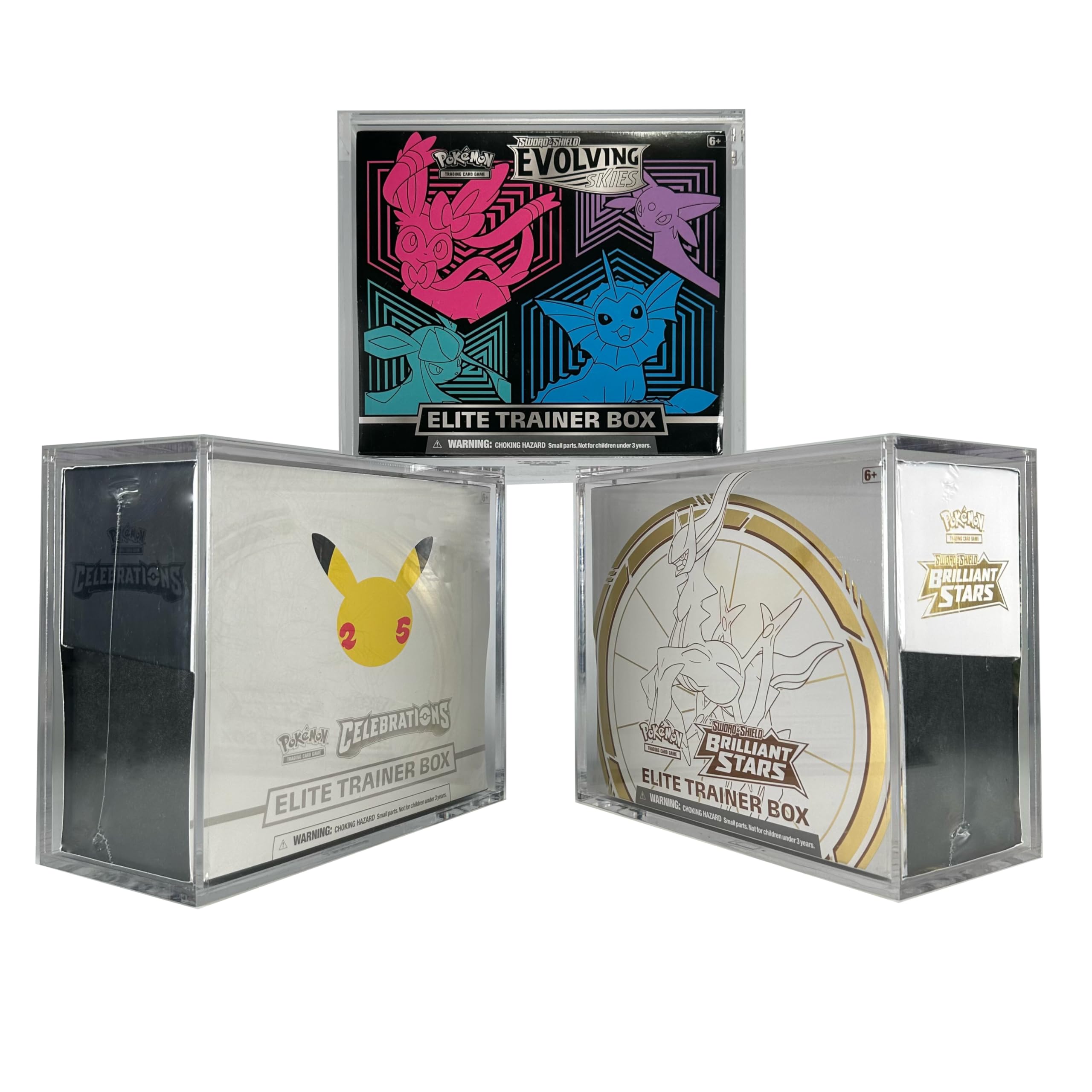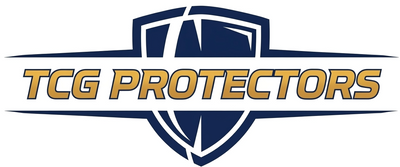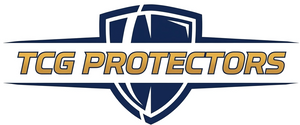Welcome to the incredible world of Pokémon card collecting! Whether you're returning to a childhood passion or discovering the hobby for the first time, collecting Pokémon cards is a rewarding journey filled with amazing artwork, exciting discoveries, and a vibrant community. But with thousands of cards and decades of history, knowing where to begin can feel overwhelming.
Don't worry, this guide is your perfect starting point. We'll break down everything a new collector needs to know, from deciphering the information on a card to choosing your first products and keeping your entire collection safe for years to come.
The Anatomy of a Pokémon Card

Every Pokémon card is packed with information that tells you about the Pokémon and its place in the TCG universe. Let's break down the key elements.
-
Name, HP, and Type: At the very top, you'll find the Pokémon's name, its Hit Points (HP), which measures its health in the game, and its elemental Type (like Fire, Water, or Psychic).
-
Stage: This tells you if the Pokémon is a Basic, Stage 1, or Stage 2, indicating its evolutionary phase. A Basic Pokémon can be played directly from your hand, while a Stage 1 card must be played on top of its corresponding Basic Pokémon.
-
Artwork: The illustration is the heart of the card for many collectors, showcasing the Pokémon in unique and beautiful styles.
-
Attacks: The main body of the card details the Pokémon's attacks, the Energy required to use them, and the damage they deal.
-
Weakness, Resistance, and Retreat Cost: At the bottom, you'll see symbols indicating which types the Pokémon is vulnerable to (Weakness), which types it takes less damage from (Resistance), and the Energy cost to switch it out of battle (Retreat Cost).
-
Collector's Info: In the bottom-left corner is the most important information for collectors:
-
Set Symbol: A small icon that identifies which expansion the card belongs to.
-
Card Number: Its specific number within that set (e.g., 6/102).
-
Rarity Symbol: A symbol that tells you how scarce the card is.
-
Understanding Card Rarity

The small symbol in the bottom corner is your first clue to a card's rarity. For most of Pokémon's history, this has been a simple and consistent system:
-
● Circle: Common. These are the most frequently found cards in a booster pack.
-
◆ Diamond: Uncommon. You'll find several of these in every pack, but they're less frequent than commons.
-
★ Star: Rare. Every pack typically contains at least one Rare card.
Beyond these basics, you'll encounter holographic cards, which add another layer of collectibility:
-
Holo Rare: A Rare card (with a star symbol) that has a shiny, holographic illustration.
-
Reverse Holo: A card of any rarity (Common, Uncommon, or Rare) where the entire card is holographic except for the illustration box. Most modern packs contain one Reverse Holo.
In recent years, The Pokémon Company has introduced even higher tiers of rarity that are the main "chase cards" for modern collectors. These often feature stunning full-card artwork and are designated with symbols like two stars or unique codes. When you pull one of these, you'll know you've found something special!
How to Start Your Collection

The best part about collecting is that there are no rules—you can collect whatever makes you happy! Here are a few popular approaches to help you find your focus:
-
Collect Your Favorites: The easiest way to start is by collecting cards of your favorite Pokémon. You can search for them online and buy them as individual cards (known as "singles").
-
Complete a Set: Many collectors enjoy the challenge of completing an entire set. A great way to do this is by starting with the most recent expansion, as its products will be readily available in stores.
-
Focus on a Theme: You might decide to collect only cards of a certain type (like all Dragon-type Pokémon) or cards drawn by a specific artist.
For your first purchase, an Elite Trainer Box (ETB) is a fantastic choice. It comes with 8-10 booster packs, a set of card sleeves to protect your cards, and a sturdy box that's perfect for storage.
Beating the Scalpers: How to Find Cards at Retail Price

The high demand for Pokémon cards means new releases can disappear from shelves instantly, often due to "scalpers" who buy products just to resell them at a higher price. It can be frustrating, but with a little strategy, you can increase your chances of finding products at their intended retail price.
-
Befriend Your Local Game Store (LGS): This is one of the best strategies. Visit your local card or comic shop, get to know the staff, and become a regular. LGS owners often prioritize their loyal customers, sometimes holding products for them or giving them a heads-up on restocks. Supporting local businesses builds a relationship that goes a long way.
-
Learn the Retail Rhythms: Big box stores like Target and Walmart have specific days they restock their trading card sections. While this varies by location, you can sometimes learn the general schedule by politely asking an employee or by observing patterns over a few weeks. Early mornings on restock days are often your best bet.
-
Follow Online Restock Alerts: The internet is your best friend in the hunt. Follow Pokémon TCG deal accounts on Twitter/X and join communities like the r/PokemonTCGDeals subreddit. Members of these communities share real-time alerts when products go live on websites like the Pokémon Center, Target, or Walmart.
-
Use Notification Services: Some dedicated services and Discord groups are set up specifically to monitor online stock. Services like PokeNotify can send instant alerts to your phone when a product you're looking for is available, giving you an edge in the race to check out.
-
Patience is Key: Sometimes, the best strategy is to simply wait. The Pokémon Company is known for reprinting popular sets to meet demand. The initial hype and scarcity will often die down, and products that were once impossible to find will become available again. Don't give in to the pressure to pay inflated prices right away.
Protecting Your Collection: From Cards to Boxes

As your collection grows, you'll want to keep your cards in great condition. Proper storage is simple and affordable, and it will preserve the beauty and value of your cards for years to come.
Tier 1: Basic Protection for Every Card
The absolute first step for any card you want to preserve, from a common you love to a rare pull, is the penny sleeve. These are soft, clear plastic sleeves that protect cards from surface scratches, dust, and oils from your hands. Every holographic card should go into a penny sleeve immediately after being pulled from a pack.
Tier 2: Organizing and Viewing Your Collection
A binder is the classic way to organize and display your cards. For the best protection, look for high-quality, side-loading binders with a zipper. Side-loading pages prevent cards from accidentally slipping out the top, and a zipper enclosure keeps out dust and debris, ensuring your collection stays pristine.
Tier 3: Securing Your Best Pulls
For your rarest and most valuable cards, you'll want an extra layer of rigid protection. This is where toploaders come in. A toploader is a firm plastic case you slide a sleeved card into. For maximum safety, many collectors "double-sleeve" their cards first by putting them in a tight-fitting "perfect fit" sleeve, then a standard penny sleeve, before inserting them into the toploader.
Tier 4: Displaying Your Prized Possessions
Once you start collecting sealed products like Booster Boxes or Elite Trainer Boxes (ETBs), you'll want to protect them just as carefully as your cards. These items are like time capsules of a Pokémon TCG era and are highly collectible in their own right.
The gold standard for protecting and displaying these items is a UV-protected acrylic display case. These hard, crystal-clear cases are designed to fit specific products perfectly and offer several key benefits:
-
UV Protection: They are made with acrylic that blocks a high percentage of harmful ultraviolet rays, preventing the box art from fading over time.
-
Durability: Thick acrylic walls protect against dust, moisture, and physical damage.
-
Presentation: Many cases feature strong magnetic lids for a secure seal and a premium look, turning your favorite sealed products into beautiful display pieces.
Whether it's a rare Booster Box or a special ETB, an acrylic case ensures it remains a centerpiece of your collection for years to come.
Conclusion: Your Adventure Begins!

Collecting Pokémon cards is a journey of discovery. Every pack holds a new possibility, and every card is a small piece of art. By understanding the basics of what's on a card and how to protect your collection, from individual cards to sealed boxes, you're ready to begin your own Pokémon adventure.
So, decide what you love, grab your first pack, and have fun! Welcome to the hobby.














Leave a comment